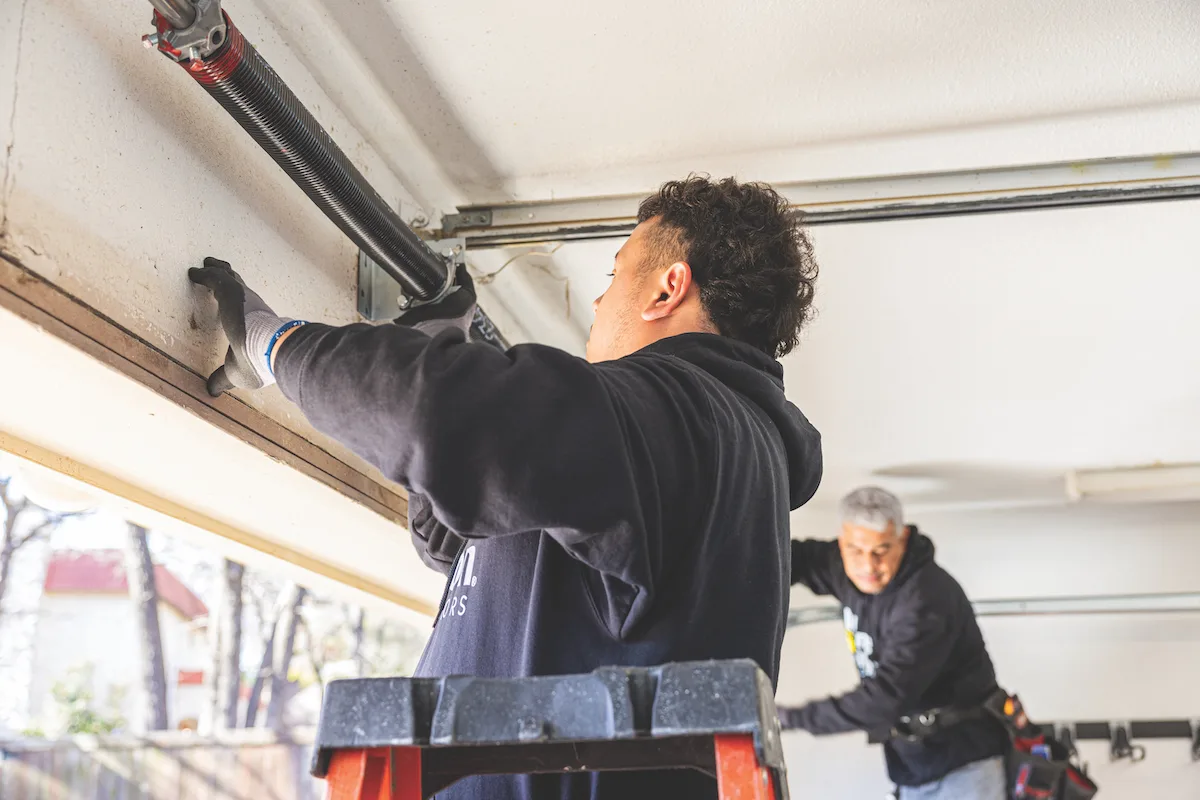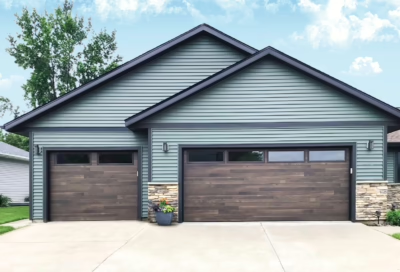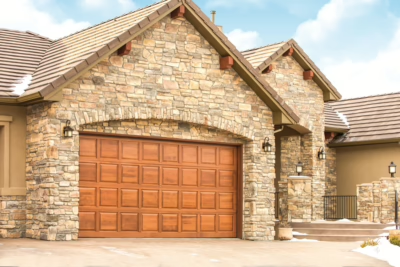A properly functioning garage door is essential — not just for access, but for safety, energy efficiency, and curb appeal. However, garage doors don’t last forever. Over time, wear and tear can compromise performance, and what starts as a minor inconvenience can escalate into a major safety or security risk.
If you’re wondering whether it’s time for a new garage door, this guide outlines the most common signs and how to determine whether repair or replacement is the right move.
Slow or Unresponsive Operation
Garage doors should respond almost immediately when prompted. If there’s a delay, hesitation, or jerky motion when opening or closing, it may point to serious issues with the motor, rollers, or opener system.
What it means: Slow response times could indicate aging components, unbalanced springs, or an overworked opener.
When to replace: If the door has received multiple repairs for the same issue or is more than 15 years old, replacement is often more cost-effective than continued service calls.
Excessive Noise During Use
A loud garage door is often more than just an annoyance — it can be a sign that mechanical components are deteriorating.
Common sounds and causes:
- Grinding or squeaking – worn rollers or lack of lubrication
- Banging or popping – misaligned tracks or broken springs
- Rattling – loose hardware or aging panels
When to replace: If noise persists even after routine maintenance, it likely indicates your door is at the end of its service life.
Frequent Breakdowns and Costly Repairs
Occasional repairs are expected with any mechanical system, but if you’re calling for service every few months, your garage door may be on its last legs.
Replacement tipping points:
- Repeated cable, spring, or opener failures
- Door won’t stay balanced after multiple adjustments
- Total repair costs exceed 50% of the cost of a new door
Pro tip: Track all repair invoices over a 12–18 month period to evaluate cost trends.
Visible Structural Damage
Physical damage doesn’t just affect the appearance of your garage door — it can impact its safety and performance, too.
Signs of serious wear:
- Large dents or cracks
- Rotting or warping (especially in wood doors)
- Corrosion on metal panels or hinges
- Broken panels or misaligned sections
If the damage affects how the door opens or closes, replacement is usually the safest option.
The Door Doesn’t Close or Seal Properly
Light leaking around the perimeter of a closed garage door is a clear signal that something’s wrong — either with the seal, the frame, or the door itself.
Why it matters:
- Air leaks reduce energy efficiency
- Gaps allow pests, moisture, and dust to enter
- Security is compromised
Older doors often can’t accommodate modern sealing systems or weatherstripping, making replacement the smarter long-term solution.
High Energy Bills from Poor Insulation
Many older garage doors — especially single-layer models — lack proper insulation. This causes temperature swings inside the garage and forces HVAC systems to work harder.
Why insulation matters:
- Prevents heat loss in winter and cooling loss in summer
- Protects stored items and temperature-sensitive tools
- Lowers utility bills over time
Types of insulation:
- Polystyrene – Basic, cost-effective rigid foam
- Polyurethane – Dense foam injected into door panels; offers superior R-value
Upgrading to an insulated garage door is particularly important for attached garages or those used as workspaces.
Outdated Design or Poor Curb Appeal
Your garage door makes up a significant portion of your home’s front elevation. An outdated or worn-out door can drag down the entire look of your property.
Modern upgrades offer:
- Wood-look finishes, contemporary glass panels, or minimalist stee
- Color customization and window configurations
- Better integration with exterior design trends
According to Remodeling Magazine’s Cost vs. Value Report, garage door replacement consistently delivers one of the highest returns on investment for home upgrades — often over 90%.
Lack of Modern Safety Features
If your garage door was installed before 1993, it may not include basic safety features like:
- Auto-reverse functionality when an object is detected
- Photo-eye sensors to prevent closure on people or pets
- Manual release for emergency exit
Many newer doors can also integrate with smart home platforms, allowing for mobile control, real-time alerts, and voice activation.
Safety tip: A door without working sensors is a major liability, especially for families with children or elderly residents.
Manual Operation or Unbalanced Weight
If you lift your garage door manually and it feels unusually heavy or falls too quickly, it likely has a spring issue or balance problem.
Warning signs:
- Broken springs – High-tension springs can be dangerous to replace yourself.
- Frayed cables – These can snap unexpectedly, causing injury.
- Unusual grinding noises – Could indicate a failing opener or motor.
- A door that won’t stay open – Likely a spring tension issue.
Replacing worn springs might offer a temporary fix, but in aging systems, the imbalance often signals deeper structural fatigue.
Real-World Example: When Repairs Stop Making Sense
A homeowner in Austin had a wooden garage door that had been in place for over 20 years. Over the span of one year, they paid for multiple service visits to address issues like a sagging panel, misaligned tracks, and noisy operation. Each fix helped temporarily, but new problems kept popping up.
After the door got stuck halfway open during a rainy morning — leaving their car stranded and the garage exposed — they finally opted for a full door replacement. The new insulated steel door not only improved curb appeal but also offered quieter operation, better energy efficiency, and peace of mind.
The takeaway: When repair bills start piling up and reliability becomes a concern, replacing your garage door can be a smarter, more stress-free investment.
Repair or Replace? A Quick Checklist
Question
If YES, Consider…
Is the door over 15–20 years old?
Do repairs exceed 50% of replacement cost?
Is the door visually or structurally damaged?
Are issues isolated to the opener or sensors?
Is performance otherwise strong after repairs?
Replacement
Replacement
Replacement
Repair
Repair
FAQs
How long does a typical garage door last?
Most garage doors last 15–30 years depending on material, climate, and usage. Wooden doors may wear out faster than steel or aluminum options.
Can I replace just one panel instead of the whole door?
In some cases, yes — but color matching, balance, and alignment can be issues. Full replacement may be more cost-effective and reliable.
Is professional installation necessary?
Yes. Garage doors are heavy and involve tension-loaded systems. Professional installation ensures safety, proper balance, and warranty protection.
Will my old opener work with a new garage door?
Maybe — but compatibility depends on the mounting system and opener power. Many customers choose to upgrade both at once for better performance.
Final Thoughts
Your garage door isn’t just an access point — it’s a security system, an energy efficiency tool, and a first impression. Ignoring the signs of deterioration can lead to costly consequences, while replacing your garage door can enhance performance, appearance, and peace of mind.
If your current door shows any of the signs above, DuraServ is here to help. Our team can assess your needs, recommend the right solution, and handle installation with minimal disruption. Contact us today for a consultation.



